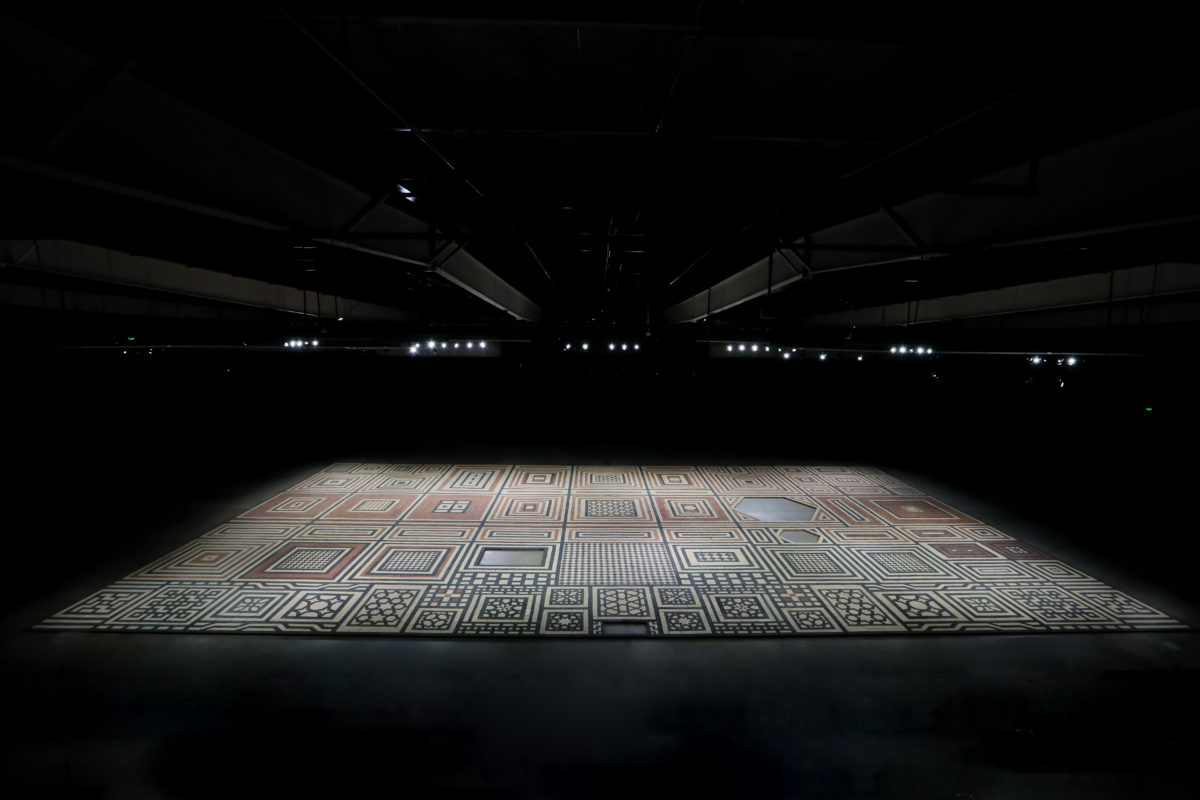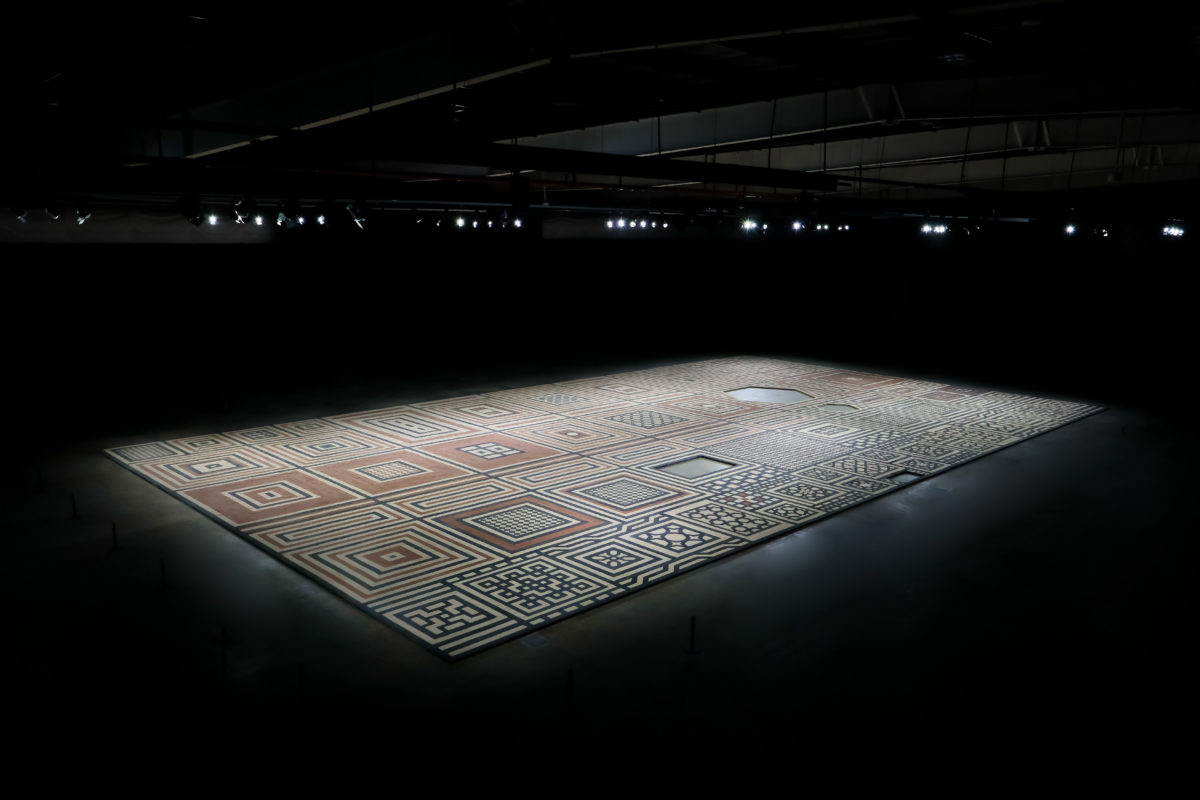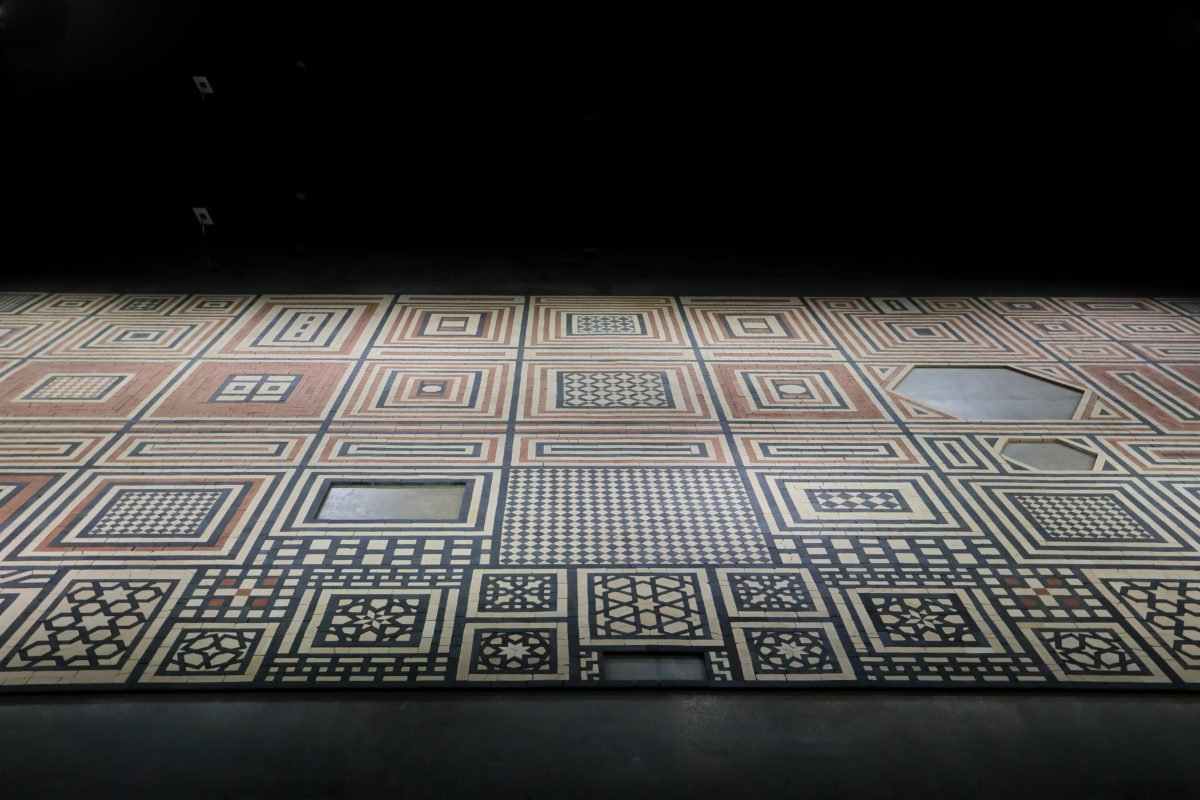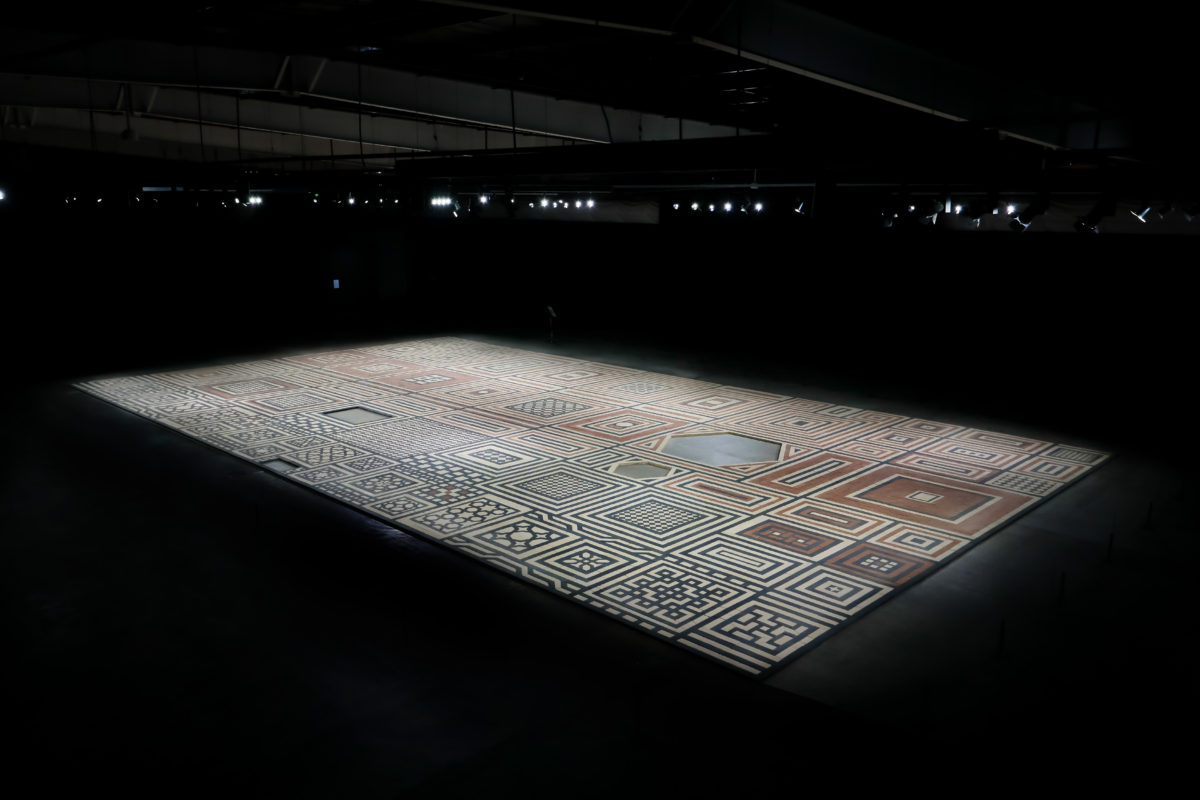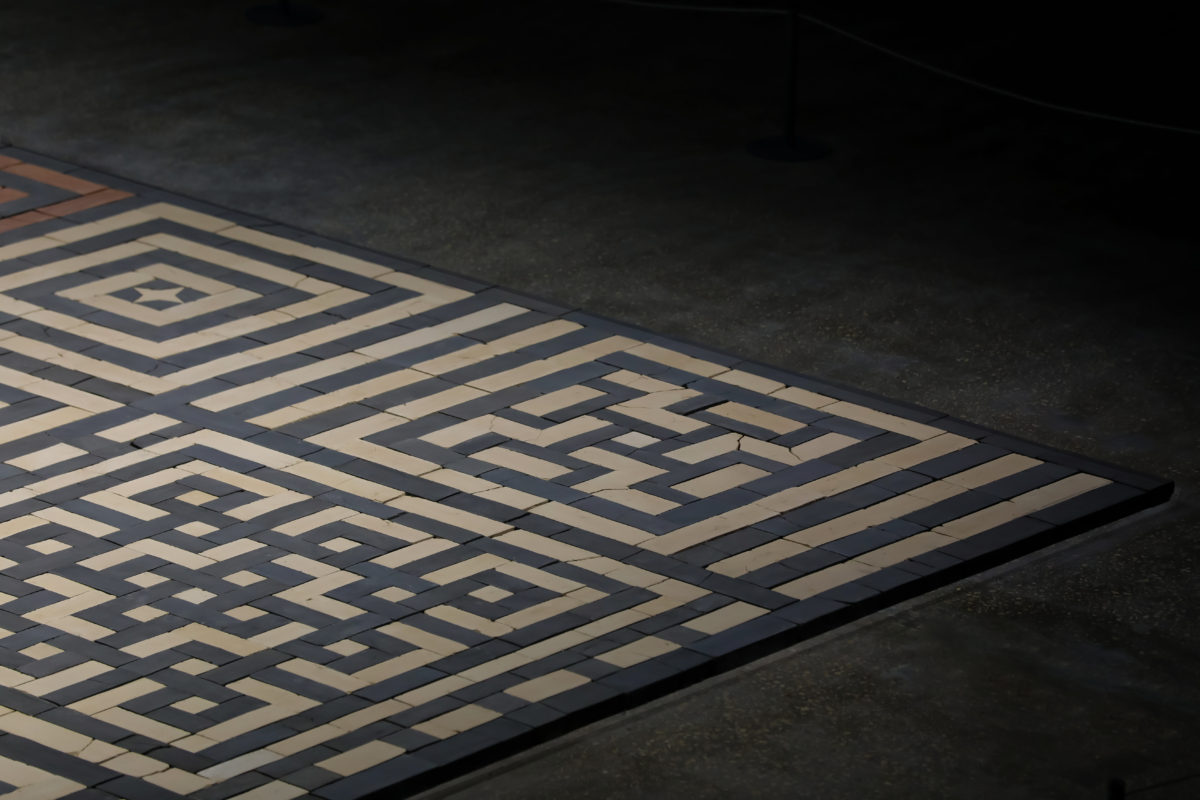STANDING BY THE RUINS OF ALEPPO
2021
Standing by the Ruins of Aleppo engages with the theme of cultural destruction through the subject of the Grand Mosque of Aleppo. The mosque suffered serious damage during the Syrian Civil War, including the destruction of its thousand-year-old minaret during fighting in 2013. As an artist of mixed Palestinian, Saudi, Jordanian, and Syrian descent, Awartani pays homage to her Syrian matrilineal heritage in particular, focusing on an aspect of family history often overlooked within Arab societies. The artist built a large-scale replica of the mosque’s courtyard, more than twenty meters long and ten meters wide. She made adobe bricks with clay earth sourced from different parts of Saudi Arabia, deliberately eschewing the standard binding agent of hay, such that the structure will crack over time. The tiled floor is surrounded by an observation platform, a structure that echoes the mosque’s enclosed architecture while allowing visitors to view the work as a whole.
Standing by the Ruins of Aleppo takes its name from the Arabic trope of “ruin poetry,” known as wuquf ‘ala al-atlal, or “standing by the ruins.” Founded in pre-Islamic times, it has found new life in the work of a generation of artists reacting to the losses of war and state violence across the Middle East.
The work makes a lost piece of cultural heritage accessible again and implicitly draws parallels between Aleppo’s Ancient City and Diriyah, both UNESCO World Heritage sites shaped by histories of war and violence. Meanwhile, Awartani’s use of adobe, a low-cost material suffused with meaning and collective memory through its role in vernacular architecture, suggests a note of hope and communal resilience.
